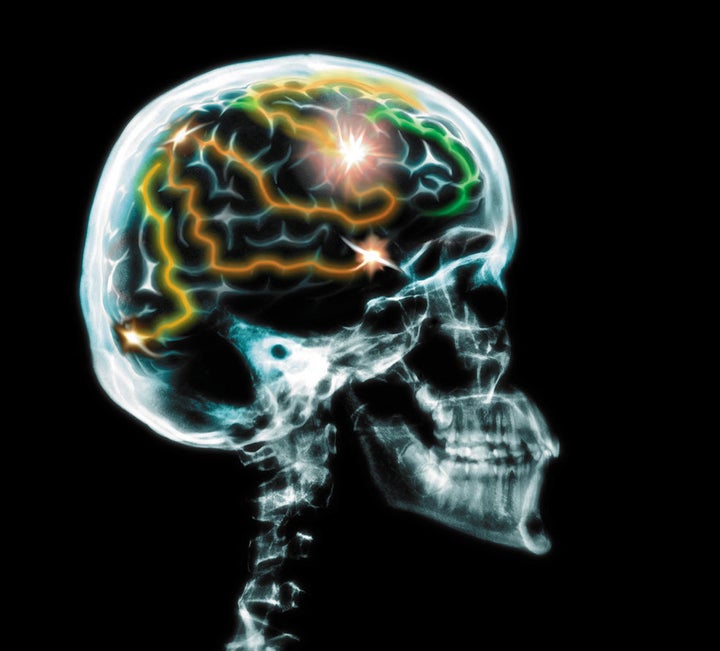
You get to work grumpy and ill-tempered and after a few surprised looks from your colleagues you tell them that you are sorry, that you are not yourself today. What do you really mean? You certainly do not mean to say that your identity has changed and that another personality has crept into your being. Had you slipped into another personality, you would not have recognized that something had changed and would not have apologized. All of a sudden you would have been a different character, known to that character's self only, and not to your old self. Think of the Three Faces of Eve, one self giving way to another and then another, each markedly different and independent. Joanne Woodward had a field day making the three Eves distinctive and the transitions sharp. She got the Academy Award in return.
What you really mean is that you are not feeling, thinking and acting in line with what you regard as most typical of you (or perhaps with what you wish would be most typical of you). And the interesting question is, of course, why you deviate from the expected course and behave as if you were someone else, maybe even someone else you know. What is going on? First, the stray from your most typical personality is temporary. Second, you have just succeeded in demonstrating how complex the normal human self turns out to be. Your multilayered self has been multitasking. One task maintained your identity during the episode. Another monitored your thoughts and actions, and detected significant departures from their desirable course. You still have only one self and one identity. However, self, identity and personality are not things, they are not objects, and they certainly are not rigid. Instead, they are biological processes built within the brain from numerous interactive components, step by step, over a period of time. The building blocks of the construction are brain maps ― the basis for mental images ― and images can give rise to actions. Self, identity and personality are ongoing performances and as such they are subject to variation. In brief, the human self has many levels, as simple as the protoself and core self that we share with many non-human species, and as complex as the autobiographical self which has achieved an amazing development in humans.
This sounds complicated and it is, but let me break it down in digestible chunks. New research indicates that the protoself level corresponds to a gathering of information regarding the state of the body. It is constructed in the brain stem and it generates feelings that signify our existence. The protoself is the necessary foundation of the overall self, and in its absence one can not be conscious. The next level, the core self, is also indispensable for consciousness. It requires an interaction of the organism with an object. It is constructed in a dialogue between the brain stem and a few parts of the cerebral cortex. It yields a sense of the "here and now", devoid of historical perspective. It gives us a consciousness of the moment. The third level, the autobiographical self, creates the more or less coherent picture of our history, a narrative with a lived past and an anticipated future. The narrative is culled from real events, from imaginary events, and from past interpretations and re-interpretations of events. Identity emerges from the autobiographical self.
Of necessity, the autobiographical self is not just about one individual but about all the others that an individual interacts with. Of necessity, it incorporates the culture in which the interactions took place. The autobiographical self does contain multitudes ― other people, other places. That the brain, drawing on a partnership between varied parts of the cerebral cortex and the brain stem, manages to put together, such a spectacular combination of images is nothing but astounding. But the other side of the complexity coin, of course, is the risk of inconsistency during the assemblage of this show, the result of which is the partial and temporary slippage into a "self" that is not our own.
Some of us, for better or worse, develop very stable, consistent, and largely predictable machineries of self. But in others, the self machinery is more flexible and more open to unexpected turns. Such flexibility comes in handy in the many areas of creativity that focus on human actions. Could one be a good actor without the ability to imagine other minds and act as such minds would? Could one write fiction or invent a successful business without such fluid self operations? Not really. And is one less dependable on the day to day when the imagination can run free and spill over in flighty behavior? Possibly so.
The poet Fernando Pessoa, who wrote under several aliases, each in an entirely different style, struggled with the tangled and abundant riches of his own self, by saying that each of us is "many". Needless to say, even when he was writing as one of his "heteronyms", as he called them, there was one single authorial self in charge of his original creations, the other authors being fictions. But when Pessoa said that "I do not know what instruments grind and play away inside of me, strings and harps, timbales and drums. I can only recognize myself as symphony", his intuition was on target, as it glimpsed the astonishing complexity of a brain engaged in producing the symphonic results we call the conscious mind. The symphonic result is easily recognizable but the brain instruments behind it have been elusive and are only now being elucidated by neuroscience research.
Antonio Damasio is the Dornsife Professor of Neuroscience and Director of the Brain and Creativity Institute at the University of Southern California, in Los Angeles